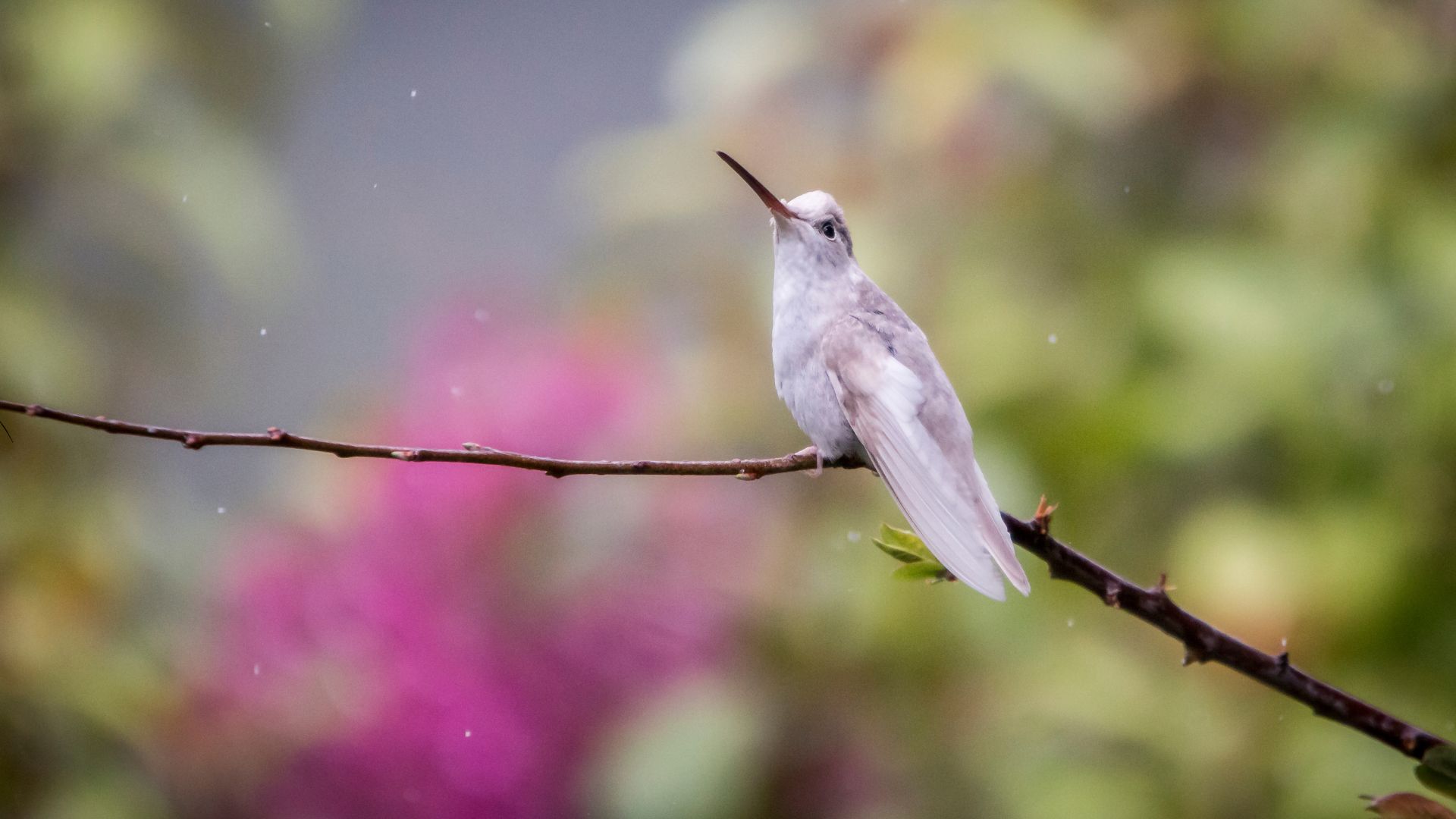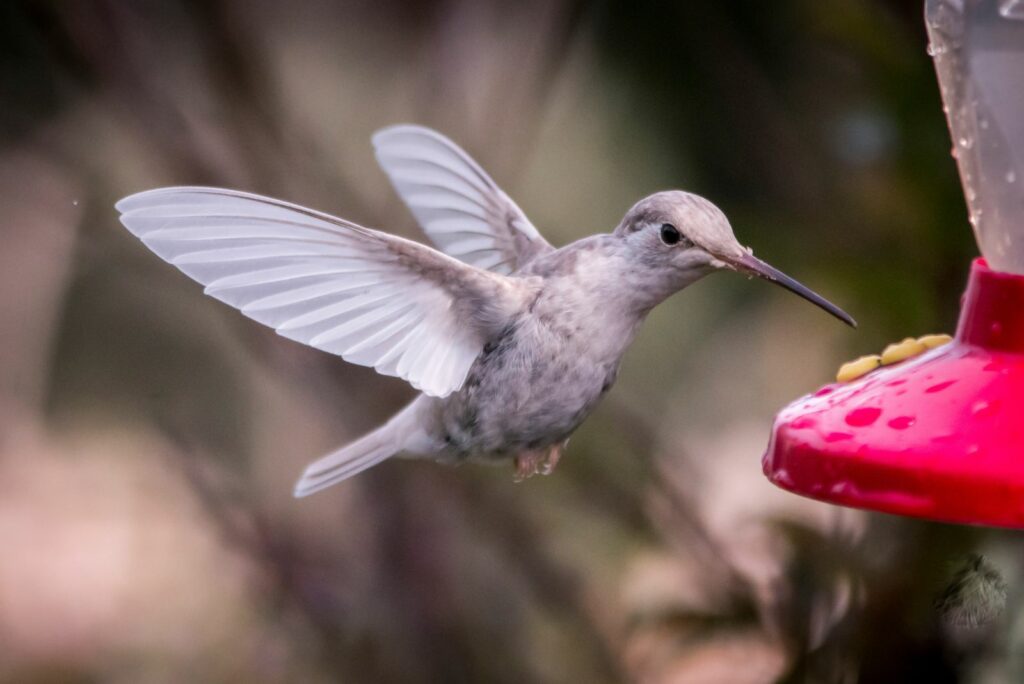I’ve had a passion for attracting hummingbirds to my garden for as long as I can remember. I’ve seen every color of the rainbow fluttering in the air (those mixed-colored hummingbirds are my personal favorite!).
Yet, the elusive white hummingbird has always been the one that’s gotten away.
Despite my best efforts and countless hours with my bird feeders, this rare beauty remains a mystery. Trust me when I say that I’ve tried every trick in the book, but this precious bird still hasn’t made its grand entrance.
So, why is it so tough to spot these scarce gems?
It’s Because White Hummingbirds Are Albinistic
I decided to do some digging and find out more about white hummingbirds – turns out, these are albinistic and leucistic birds that don’t have normal pigmentation like others.
You might know that albinism makes animals completely white, but what about “leucistic“? It’s not exactly a word you hear every day, right?
Imagine albino birds as the ultimate snowbird they’re all white, with pink beaks, eyes, and feet.
Leucistic birds, on the other hand, are like their more stylish cousins – they’re white too but with black beaks, eyes, and feet. Sometimes they even have patches of different colors on their feathers (the most interesting kind!).
So, what’s the difference?
Albino birds can’t produce melanin, the pigment that gives color to feathers and skin.
Leucistic birds can produce melanin, but it doesn’t quite make it to their feathers the way it should.
While both albinistic and leucistic birds are often lumped together in bird stats, leucistic ones are way more common. According to data from Project FeederWatch, over three-quarters of these rare white birds are leucistic.
In fact, experts say only about 0.5% of all birds are albinistic. Seeing a pure white hummingbird is like a natural miracle, and I’m hoping one day I’ll get lucky enough to spot one myself.
Also read: Why It’s So Tough To Spot Baby Hummingbirds And What You Need To Know About Them
And These Birds Have A Tougher Time Surviving
We can all agree on one thing: white is not the most popular color in the bird world.
In fact, if you’re trying to attract birds to your garden, white flowers might not be the best choice. It’s not just because white feathers are rare, but also because they can make birds more vulnerable.
White surfaces can actually scare birds away. I remember a year when I tried everything to attract hummingbirds, but they just didn’t show up. It turned out that my white garage doors were probably keeping them away from my garden.
Another reason you don’t see these birds very often is that they struggle to survive in the wild.
Their lack of color means they don’t blend in well with their surroundings, making them easy targets for predators. And without melanin, their feathers aren’t as strong or as good at keeping them warm.
Albinistic hummingbirds, in particular, face serious challenges and often don’t make it past the fledgling stage (that’s why spotting one is such a rare and special event).
If you’re keen to catch a glimpse of one of these precious little birdies, make sure your hummingbird feeder is in a great spot and keep your eyes peeled this season.
You might just be lucky enough to see a white hummingbird flutter by!



